Introduction
Car design is a way of making both outside and inside of an automobile in a style, which integrates shape of the car with its mechanical ability. Automotive design involves vehicle development in the way it appears which includes its ergonomics. The design elements are usually divided into three important areas: one is the exterior design, which involves the design in the proportion, shape and how the texture of the surface of the vehicle will look like. This design is done first through making drawings either manually or electronically.
Then there is the development of clay or digital model. The other aspect is in interior design which defines where parts such as doors, and seats, among others, are placed. This aspect emphasizes mainly on the ergonomics and the passengers comfort. It goes through the same procedure as the exterior design of sketching, then designing the digital and the clay model. The last aspect in design is usually focused on trims along with its color. To achieve this, extensive research and development is usually involved.
Discussion
1950s Cars Design
The early 1950s gave rise to chrome on cars and stylists who influenced by ideas from planes and trains designed many automobiles. The 1950s saw emergence of the tail fin courtesy of Harley Earl who worked on aeronautical designs. The tail fin era was between 1957 and 1960.
The tail fin and chrome were most regarded as the design, which gave some of the outlandish cars ever designed in this era. Another revelation came in 1955, when Ford designed its model, which they named Ford Thunderbird. It was quite complex with rear exhaust, windshield, and front grill with fixed turbines (Hulbert, 2010).
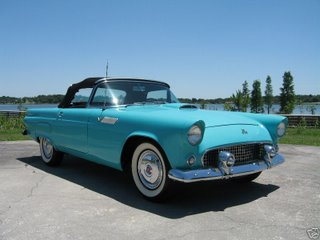
Chrysler’s group designer by the name Virgil Exner was notable with his different style of cab forward also known as the Forward Look. An example of the Forward look design is a 1956 Plymouth Fury, as is shown in the picture below (Bell, 2003, p. 12).
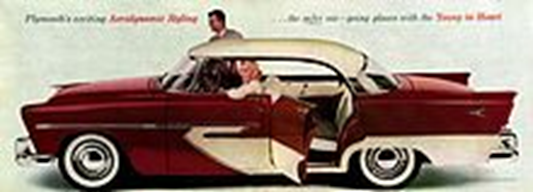
General motor’s Harley Earl and Virgil Exner turned out to be very influential in this era. They competed with one another with tail fins that are more elaborate. Earl saw this as a ploy to marketing while Exner believed the fins helped the car while on the road. These fins were later on utilized to control cars in great speeds. In 1957, there was a new design called the Chevrolet Bel Air as shown in the picture below, which gives the extent to which the designers were willing to go (Hulbert, 2010).

In 1959, the previous designs were replaced with the Cadillac Series 62. This design was fitted with fins that were over 1ft high, and it had bullet lenses at the rearwards. This was regarded as a design icon and rates highly among all time American classics (Jain, 2004, p. 2).

The above picture shows the design of a tail fin 1959 Cadillac automobile which came up at the height of the tail fin era. Earl later came up with iconic designs together with his group to create such designs as Auburn 851, among others.
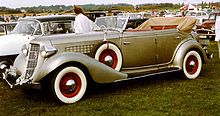
In 1959 saw a new design of Cadillac Cyclone, which was a fantasy of a rocket like, it, had a wheelbase of about 104 inches. It had an independent suspension and a top of clear plastic. It was coated inside using vaporized silver that it can resist sunrays and had electric sliding doors.
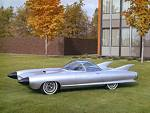
1960s
During this era, focus was shifted to vehicle speeds and acceleration as well as engine size. The designs that were available included Ford Mustang, Chevrolet Camaro, and Dodge Charger. These designs were fitted with vents all over which had no purpose at all but for just mere appearance. The Dodge Charger had a fuel tank capacity of 7.2 liters.
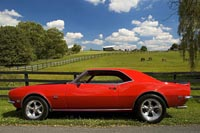
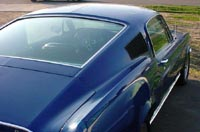
In this same era, there was consolidating into the big three of General Motors, Ford, and Chrysler together with American Motors. These firms dominated both the global market and the domestic market. In 1961, General Motors introduced three models. One was the Oldsmobile F-85, which was a sedan and station wagon powered, and it had a V8 engine. It was available for the period from 1961 to 1963. The Oldsmobile F-85 was later upgraded in 1964 to an intermediate car.
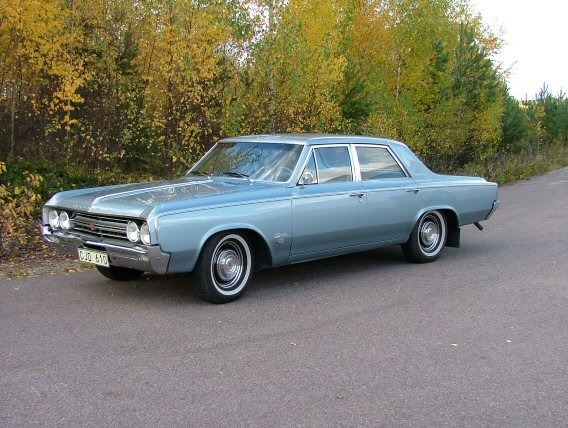
1970s Cars Design
This decade saw the introduction of the wedge and high profile cars. Examples of the cars of this era include BMW M1, De Tomaso Pantera, Lamborghini Countach, and Lotus Esprit. The 1970s ushered in an interesting design, in angular box lines, which became a trait in style. This was again copied over into the 1980s.
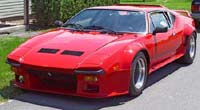
1980s Cars Design
The 1980s decade came with a trend of over indulgence, and the cars produced during this era were overpriced. It also witnessed the effects of materialism in that style was outdated, as most of the people wanted the expensive cars. The cars that were available at this time were the likes of Audi Quattro.
Though it looked purposeful and powerful, it had no style and was not beautiful in shape. Another model was the Ferrari Testarossa, which was quite unfamiliar from the traditional Ferrari lines. Among the easily recognizable inclusions in designs of 1980s was incorporation of a hot hatch. In line with this, cars like Peugeot 205 along with Volkswagen Golf, which are both GTis started penetrating the market and were popular with the product named above (hot hatch) (Diseno-art., 2011, p. 1).
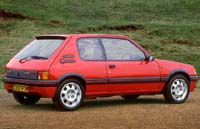
1990s Cars Design
The effects of the styling traits from the 1980s extended to some part of the early 1990s. Later on some interesting shapes began to come up which were very organic with appearance looking much powerful like the Dodge Viper. The Dodge Viper was made in a more look of an animal than a machine. In 1992, an Italian design house called Ghia extended the organic form to another level with shapes covering the car. The front face of this car model looked like a prehistoric animal. In 1995, another design came in Ford GT90; this design was clearly the reverse of Viper. This new model utilized edge design as its policy to create new model (Anythingaboutcars, 2011, p. 1).
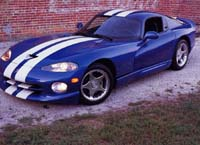
What the major point that change from the car design from 1950-2000
1950s
The main changes in car design covered areas such as fuel efficiency and output of the engine. In 1950s, major changes that took place in car designs included jet designs, among others. This design made cars quite fascinating.
1960s
This era saw the introduction of basic wedge profile. Later on, the engines of these cars were transversely mounted, and their bodies designed to support structural loads.
1970s
This period saw introduction of a utility that combined luxury along with capability of four-wheel drive. Another additional change was the inclusion of electronic anti-lock braking system. This era had the most changes as it also saw design of restraint airbags, seatbelts, and traction control systems. In addition, the era also saw inclusion of computerized engine system.
1980s
This era brought about the introduction of front-wheel drive cars along with compact cars, which had the advantage of being efficient in fuel consumption. This period also saw the introduction of the two-box minivan design in 1983.
1990s
This decade was quite memorable with the introduction of designs with hatchbacks. car bodies were designed to incorporate passengers as well as cargo.
Explain how material culture has been designed and used as relational media on car development 1950-2000
Automobiles play an important role in life since they ease travelling; their introduction opened opportunities for people to transport goods and services. Development in car designs also encouraged subjective democracy since people could go to their places of choice. Moreover, Car development brought about power, style, and a way of identifying each other’s taste and style in society. Automobiles were much friendlier to the environment and were cleaner because it eliminated the animal waste in the streets (Raizman, 2003).
Influence of car designs between 1950 and 2000 on political, economic, and social as well as culture climates
Political
Development of automobiles has contributed greatly towards political change. This is due to increase in individualism and reduction of social interactions amongst people from diverse socioeconomic backgrounds. In addition, automobiles manufacturers urged governments to construct roads and conservatives have become more interested in promoting improvements in automobile industry (Raizman, 2003).
Economic
Developments in car designs have greatly influenced spreading of employment opportunities and planning of the city, among others. In addition, it has minimized rate at which people walk to work and use of railroads. Another area that has greatly benefited is infrastructure; this is evident in the increased number of good roads all over the world (Logix Microsystems Ltd., 2011).
Social
Social changes brought about by the effects of development in automobile industry include disconnection between communities due to reduced pedestrian-village interaction. It also brought less communication amongst neighbors because they rarely walk unless it is for exercise reasons.
Culture
The developments of automobiles brought about ease in travelling from one place to another since it was more affordable and convenient. This was mainly in areas not accessed by railways. Another change brought about by automobile development is that it made people keener while walking across the streets.
This growth also led to outward expansion of cities and development of suburbs. In addition, it encouraged people to live in less expensive areas, which are far from the city and encouraged interactions in neighborhoods. Another cultural change is in incorporation of automobiles in all aspects of life. These range from books to music as well as movies (Logix Microsystems Ltd., 2011).
Which mutations of styles and idioms morphed and ensued
The styles that are usually used in car design are quite varying and distinct in style of body design and its classification is not huge. The most common styles used are four-wheel drive vehicle, which are designed in such a way that all the wheels receive engine power at the same time. Another style is called the convertible design, which has a folding roof that allows for an open roof while driving. Thirdly, there is the station wagon design, which has same height from both sides.
Conclusion
For the past few years, car designers have engaged in designing products for ideas. A smart car is one that can get instructions from a user and execute the information by itself. An example would be a smart car. There are two elements involved in car design; these include ensuring a balance in ergonomics as well as aesthetics. Car design is a field, which keeps on changing and can never be said to be predictable (Anything about cars, 2011, p. 1).
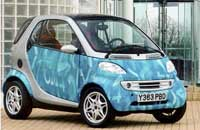
References
Anythingaboutcars. (2011). The Fabulous 1950s Cars – Here is Their Story. Web.
Bell, J. (2003). Concept of Car Design: Driving the Dream. Rotovision. Web.
Diseno-art. (2011). From Concept Cars to Power Boats: Car Design History – a brief overview. Diseno-art.com. Web.
Hulbert, L. (2010). Car Design: Car Designs of the 1950s. Web.
Jain, S. L. (2004). Dangerous Instrumentality: The Bystander as Subject in Automobility. Cultural Anthropology 19 (1): 61–94. Web.
Logix Microsystems Ltd. (2011). Car Designs: 1950-2009. Web.
Raizman, D. (2003). History of Modern Design. New Jersey: Prentice Hall Art.